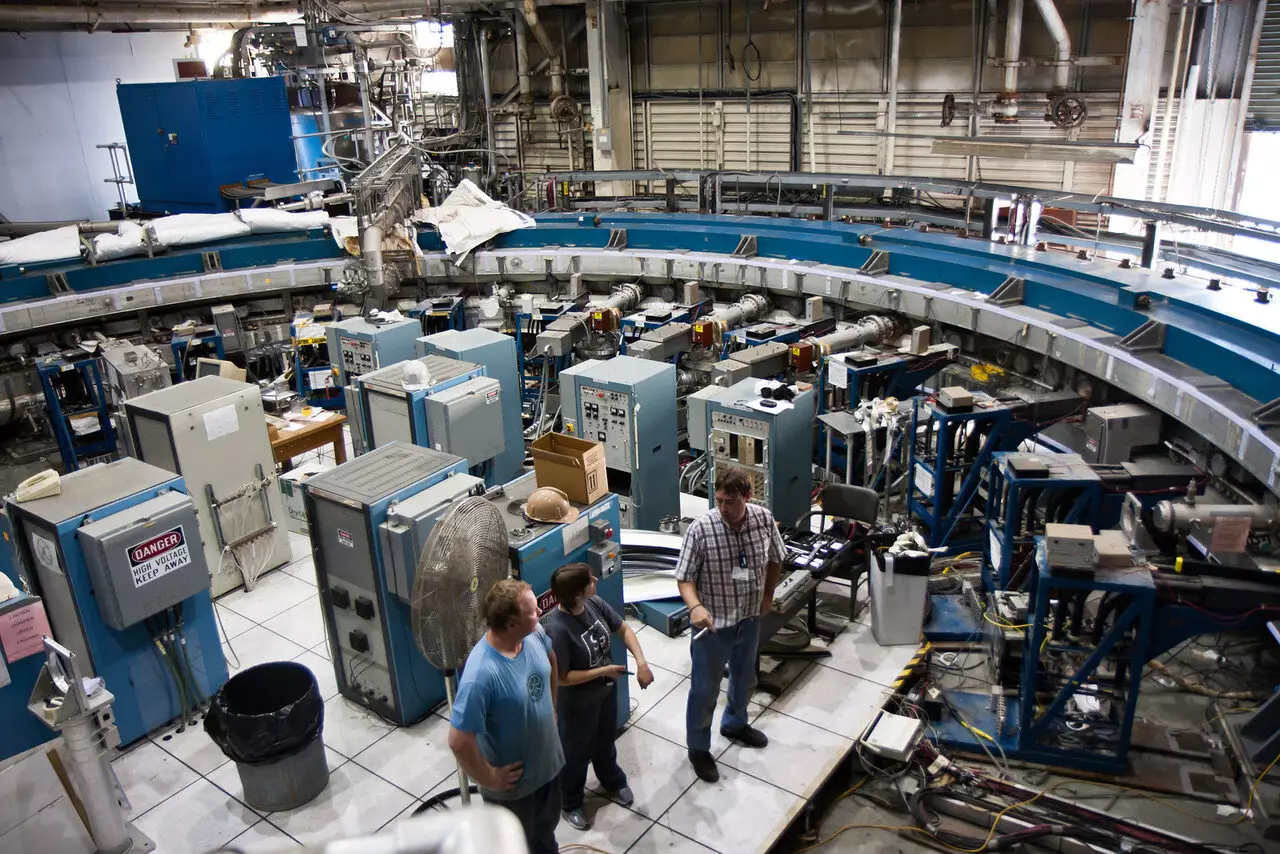The muon, a heavier cousin of the electron, has recently become the focus of intense scientific investigation as researchers strive to understand its properties in greater detail. A groundbreaking experiment conducted by the Muon g-2 Collaboration at Fermilab has made significant strides by measuring the muon’s anomalous magnetic moment with unmatched accuracy, more than doubling the precision of previous experiments. This achievement not only marks a milestone in particle physics but also opens new avenues for exploring fundamental questions regarding the universe’s basic building blocks.
The innovative experiment involved circulating muons—particles that exhibit properties akin to electrons but possess a mass approximately 207 times greater—within a massive particle storage ring. This ring, with a diameter of 7.1 meters, subjected the muons to a magnetic field that was around 30,000 times stronger than that of Earth. Under these extreme conditions, the muons precess around their spin axis, a phenomenon influenced by both their own intrinsic magnetic moment and the virtual particles that populate the vacuum of space.
By meticulously analyzing the rate of this precession, in conjunction with the muons’ cycling frequency around the storage ring, scientists were able to determine the muon’s anomalous magnetic moment with an extraordinary level of precision of 0.2 parts per million. The team, which comprises 181 physicists from seven countries, has made remarkable improvements since the initial measurements started back in 2006 at the Brookhaven National Laboratory. The precision achieved in this latest measurement is now 2.2 times better than prior determinations from earlier data.
Lepton magnetic moments are integral to our understanding of particle physics, and measuring them accurately poses some of the most complex challenges in experimental science. The electron’s magnetic moment has been determined with a remarkable precision that extends to 11 significant digits, corroborating theoretical predictions derived from quantum electrodynamics (QED) to an astonishing degree of accuracy. Thus, any deviation observed in muon measurements could signal the presence of new physics that goes beyond the established Standard Model.
The Standard Model provides a framework for understanding electromagnetic interactions, but muon measurements could potentially reveal inconsistencies within this model, given the muon’s enhanced sensitivity to new particles due to its heavier mass. Theoretical calculations offer insights into interactions involving not only QED but also electroweak contributions. This includes considerations of virtual particles such as Higgs and Z bosons, as well as interactions involving hadronic sectors.
One of the notable challenges for scientists in evaluating the muon’s anomalous magnetic moment lies in its hadronic contributions, which are grounded in the properties of strongly interacting particles. Specifically, factors such as hadronic vacuum polarization and hadronic light-by-light scattering complicate the calculations. Although contributions via QED and electroweak theory are relatively well established, understanding hadronic effects remains a contentious area among researchers.
During the experimental processes at Fermilab, bursts of muons were injected into the storage ring every 1.4 seconds, allowing the researchers to gather extensive data over a period of several years. Despite the advancements in measurement precision, the team acknowledged limitations due to uncertainties in theoretical predictions concerning hadron effects. Current analyses utilize only two prior experiments for comparison, and significant discrepancies exist, thereby necessitating further validation.
Future Perspectives
As the Muon g-2 Collaboration continues to analyze data, additional runs promise to enhance the statistical precision by approximately another factor of two. Such efforts could lead to new insights into the underlying principles of particle physics and broaden our understanding of fundamental forces and particles.
The pursuit of precision measurement in particle physics requires not only advanced experimental techniques but also intricate theoretical frameworks. Hence, the development of both aspects is crucial to advance the field further. The implications of these findings are vast; they may challenge established theories and foster new paradigms in physics. The excitement surrounding muon research is palpable, as scientists gear up for the next wave of discoveries that promise to reshape our comprehension of the fundamental constituents of matter and the forces governing them.
The Muon g-2 Collaboration’s latest measurement initiatives showcase revolutionary advancements in particle physics research, heralding a bright future where the fundamental mysteries of the universe may soon be illuminated.


Leave a Reply